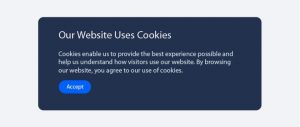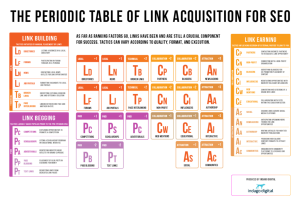Forming a plan for executing on an SEO task list can be overwhelming. Google’s algorithm considers more than 200 ranking factors, and every website you come across in your research offers a new piece of guidance that compounds your already lengthy to-do list. Just a few days of research—or a machine-run technical SEO audit—can result in hundreds of tasks that all seem important.
But not all SEO tasks are equal.
It’s unlikely that every task will be worth completing, especially if you’re working with a small team or limited budget. Before executing on your SEO task list, you need to prioritize it. By prioritizing, you can form a plan that maximizes the impact of your changes, helps you stay on budget, and enables you to earn both an earlier and higher return on investment.
How to Rank SEO Priorities
To form a plan for executing against your SEO task list, you need to first determine two things: the amount of effort required to complete each task, and the amount of value each task provides. After that, you can prioritize to determine the sequence in which you should complete tasks.
- First: High-value, low-effort tasks
- Second: High-effort, high-value tasks
- Third (do it later): Low effort, lower-value tasks
- Last (do it … never?): High-effort, lower-value tasks
The process of gathering effort estimations is simple—you just need to get the team/individual who will be completing tasks to tell you about how long each task will take to implement. You’ll get a wide scope—everything from a few hours to a few months. These estimations can help you baseline what constitutes high and low effort.
The value of completing a task is a bit more difficult to discern. All tasks will provide some value, but not all will provide enough value to justify the effort—and budget—required to complete them.
SEO Tasks that Waste Your Time
When executing on an SEO task list, it’s easy to get bogged down by recommendations that are good things to do, but won’t provide a big boost to rankings. For example, Google Search Console provides a list of crawl errors that could potentially add 314 tasks to your list:

However, crawl errors are not necessarily high-priority (or even moderate-priority). In some situations, Google even recommends 404 pages. While you should certainly address unintentional errors, fixing all crawl errors will not provide a boost in rankings and is probably not worth the effort.
The prominence of crawl errors in Google Search Console leads webmasters to believe that fixing these issues should be a critical priority, and that’s just one source of misleading information that drives execution of low-value SEO tasks. A machine-run SEO audit will provide dozens—if not hundreds—of additional recommendations for tasks that will provide little value.
Some common recommendations aren’t actually high-priority:
- HTTPS Site Setup—In 2014, Google announced that HTTPS encryption was being integrated into its algorithm as a ranking factor. Implementing HTTPS is a great thing to do, but it’s a complex process that carries a lot of risk and requires a lot of time and effort. Additionally, the rankings boost provided by making the switch is minimal, so if your goal with SEO is to increase rankings, moving to HTTPS shouldn’t be a top priority.
- Length of Domain Registration—Another minor ranking factor is the amount of time that your domain has been registered. There’s little that can be done to overcome this issue aside from purchasing an expiring domain and migrating all of your content over—a huge undertaking that carries a lot of risk. The minimal rankings boost you might get are not be worth the effort and risk involved.
- Social Media Signals—Social media is an effective way of promoting your site and content, but Google has stated that social media signals do not have an impact on rankings. Social media optimization is an excellent practice to employ as part of a social media or content marketing strategy, but as an SEO strategy, social media optimization will not have an impact on rankings.
- Keyword Density—At one time, keyword density was an important ranking factor, but that’s no longer the case. While it’s still important to use keywords in your content, the amount of times the keyword is used is unimportant.
Other commonly recommended tasks that provide questionable value include meta tag optimization and URL formatting changes. The value of these tasks often depends on the effort involved in executing the tasks.
For example, if you have 3,000 pages of content with unique—but unoptimized— title tags, the massive effort required to revise all 3,000 meta titles may not provide enough value to justify the effort. Likewise, URL length and use of keywords in URLs may also provide small boosts in rankings. However, the amount of time it takes to revise and redirect thousands of URLs is substantial, and the task may not provide results that justify the efforts.
SEO Tasks to Prioritize
We know that Google’s top three ranking factors are content quality, incoming links, and RankBrain, so tasks on your list related to these three factors are likely to be of high value. Additionally, the SEO community tirelessly tests updates and surveys search results to determine what might be affecting rankings.
Those considerations become SEO priorities, because we know by experience that they produce measurable results:
1. User Intent (Keyword) Research
Content that works for an SEO strategy needs to start here. Make sure you know not only which words and phrases your audience is searching, but what questions they are really asking when they do. Do they want information or products? Simple content that users want is infinitely more valuable than robust content no one is interested in.

From Google’s Search Quality Evaluator Guidelines
2. Content Quality
Of Google’s top three ranking factors, content quality may be the most important because it drives the other two: it encourages incoming links, and it provides answers that fully satisfying searcher intent. Focus on creating content that outshines what is already performing well for your targeted queries. If most are videos, prioritize creating video content over writing blog posts, etc.
Don’t look to own just a few keywords. Build out a lot of quality content around a topic, going after many top keywords, and you’re likely to gain topical authority—meaning top ranks for hundreds of related searches.—Jamie Duklas (@jduklas)
3. Incoming Links
Backlinks from authoritative, high-quality websites serve as signals of site and content quality. Monitor your backlinks so you can clean up any low-quality links that might hurt your site, and network with other influencers and thought-leaders so you can earn good links.

Ahrefs is a great tool for monitoring backlinks.
4. Mobile Optimization
Sites that are not optimized for mobile don’t rank well on mobile SERPs, and soon they won’t rank well on desktop searches either. As Google prepares to roll out mobile-first indexing, make sure your site provides an awesome mobile experience.
This is big, so send us your questions so we know what’s not clear & what we need to communicate more about
— Gary Illyes ᕕ( ᐛ )ᕗ (@methode) November 5, 2016
5. Strategic SERP Snippets
Ranking on page one is still worthless if no one clicks on your page. Look at other SERP snippets on the page and experiment with making your page title and meta description stand out. Better yet: create clear and/or structured content on the page that will earn the featured snippet box.
6. Canonical Tags
If your content is duplicated across multiple web properties, it’s important to designate a single, primary source of the content through the use of canonical tags. Canonical tags allow you to route incoming link authority signals to a single content URL.
7. Site Speed
With most searches now occurring on mobile devices, and Google prioritizing mobile experiences, site speed is more important than ever. Pages that load quickly provide a better user experience and get a boost in rankings.
A one second delay in page response can result in a 7% reduction in conversions. (Kissmetrics)
8. User Experience
Removing or repairing any elements of your site that create a poor user experience can also provide a significant boost to rankings. Examples include broken navigational elements and intrusive interstitials that block users from accessing site content.
As with low-priority tasks, the value of some SEO best practices may not be completely straightforward. In part, value is dependent on the quality of your existing site, and the end results you’re driving towards.
If you engaged in black-hat link building practices in the past, for example, getting rid of those low-quality links may be higher priority than creating new, quality content, because the new content will suffer from the same low-quality link penalties.
Think of your site as a house. Would you add on to the house or remodel the second floor if the foundation was leaking water into your basement? Then why drop money into content marketing when your site has major issues?—Dave Rohrer (@daver)
Further, RankBrain is always on, determining which factors and features are more important for every search, based on industry, niche, etc. Before you throw your energies into brushing up a ranking factor, study the top search results for your keywords, and make sure you’re prioritizing what RankBrain is prioritizing.
Forming an Actionable SEO Plan
Generating a long SEO task list is not difficult. But for an SEO strategy to be truly effective, marketers cannot just start at the top, and managers and CMOs shouldn’t accept an unprioritized list. SEO busywork will not budge rankings or help drive organic traffic. Worse, it will drain SEO resources and damage the program’s credibility.
If you already have a to-do list, start by organizing it according to the effort involved in completing each task. Then, identify which of the low-effort tasks will provide the most value based on SEO best practices and your individual goals. Start your SEO initiative by completing those tasks first in order to earn the biggest benefit with the smallest budget.
Special thanks to our analysts and friends who lent their input to this post: Jessie Hartman (@anotherseoninja), Jamie Duklas (@jduklas), Matt Koulas (@mattkoulas), Dave Rohrer (@daver), Steve Wiideman (@seosteve), Rebecca Levinson (@rebeccalev), and Katherine Ong (@kwatier).
Digital & Social Articles on Business 2 Community(110)
Report Post





